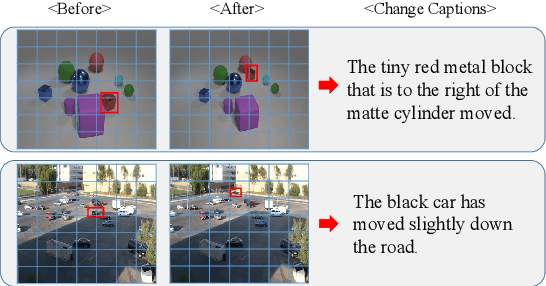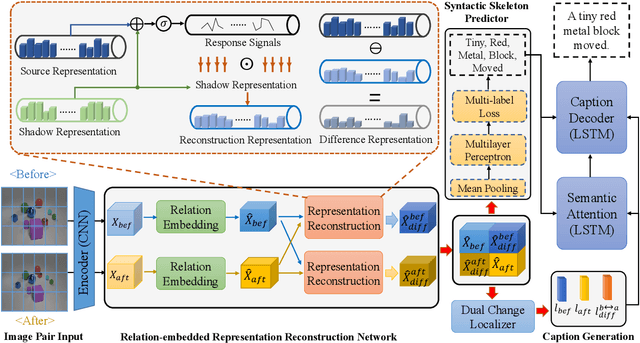Shengxiang Gao
Multilingual Generative Retrieval via Cross-lingual Semantic Compression
Oct 09, 2025Abstract:Generative Information Retrieval is an emerging retrieval paradigm that exhibits remarkable performance in monolingual scenarios.However, applying these methods to multilingual retrieval still encounters two primary challenges, cross-lingual identifier misalignment and identifier inflation. To address these limitations, we propose Multilingual Generative Retrieval via Cross-lingual Semantic Compression (MGR-CSC), a novel framework that unifies semantically equivalent multilingual keywords into shared atoms to align semantics and compresses the identifier space, and we propose a dynamic multi-step constrained decoding strategy during retrieval. MGR-CSC improves cross-lingual alignment by assigning consistent identifiers and enhances decoding efficiency by reducing redundancy. Experiments demonstrate that MGR-CSC achieves outstanding retrieval accuracy, improving by 6.83% on mMarco100k and 4.77% on mNQ320k, while reducing document identifiers length by 74.51% and 78.2%, respectively.
Beyond Seen Data: Improving KBQA Generalization Through Schema-Guided Logical Form Generation
Feb 19, 2025Abstract:Knowledge base question answering (KBQA) aims to answer user questions in natural language using rich human knowledge stored in large KBs. As current KBQA methods struggle with unseen knowledge base elements at test time,we introduce SG-KBQA: a novel model that injects schema contexts into entity retrieval and logical form generation to tackle this issue. It uses the richer semantics and awareness of the knowledge base structure provided by schema contexts to enhance generalizability. We show that SG-KBQA achieves strong generalizability, outperforming state-of-the-art models on two commonly used benchmark datasets across a variety of test settings. Our source code is available at https://github.com/gaosx2000/SG_KBQA.
A Mixed-Language Multi-Document News Summarization Dataset and a Graphs-Based Extract-Generate Model
Oct 13, 2024Abstract:Existing research on news summarization primarily focuses on single-language single-document (SLSD), single-language multi-document (SLMD) or cross-language single-document (CLSD). However, in real-world scenarios, news about a international event often involves multiple documents in different languages, i.e., mixed-language multi-document (MLMD). Therefore, summarizing MLMD news is of great significance. However, the lack of datasets for MLMD news summarization has constrained the development of research in this area. To fill this gap, we construct a mixed-language multi-document news summarization dataset (MLMD-news), which contains four different languages and 10,992 source document cluster and target summary pairs. Additionally, we propose a graph-based extract-generate model and benchmark various methods on the MLMD-news dataset and publicly release our dataset and code\footnote[1]{https://github.com/Southnf9/MLMD-news}, aiming to advance research in summarization within MLMD scenarios.
Multilingual Knowledge Graph Completion from Pretrained Language Models with Knowledge Constraints
Jun 26, 2024



Abstract:Multilingual Knowledge Graph Completion (mKGC) aim at solving queries like (h, r, ?) in different languages by reasoning a tail entity t thus improving multilingual knowledge graphs. Previous studies leverage multilingual pretrained language models (PLMs) and the generative paradigm to achieve mKGC. Although multilingual pretrained language models contain extensive knowledge of different languages, its pretraining tasks cannot be directly aligned with the mKGC tasks. Moreover, the majority of KGs and PLMs currently available exhibit a pronounced English-centric bias. This makes it difficult for mKGC to achieve good results, particularly in the context of low-resource languages. To overcome previous problems, this paper introduces global and local knowledge constraints for mKGC. The former is used to constrain the reasoning of answer entities, while the latter is used to enhance the representation of query contexts. The proposed method makes the pretrained model better adapt to the mKGC task. Experimental results on public datasets demonstrate that our method outperforms the previous SOTA on Hits@1 and Hits@10 by an average of 12.32% and 16.03%, which indicates that our proposed method has significant enhancement on mKGC.
R$^3$Net:Relation-embedded Representation Reconstruction Network for Change Captioning
Oct 20, 2021



Abstract:Change captioning is to use a natural language sentence to describe the fine-grained disagreement between two similar images. Viewpoint change is the most typical distractor in this task, because it changes the scale and location of the objects and overwhelms the representation of real change. In this paper, we propose a Relation-embedded Representation Reconstruction Network (R$^3$Net) to explicitly distinguish the real change from the large amount of clutter and irrelevant changes. Specifically, a relation-embedded module is first devised to explore potential changed objects in the large amount of clutter. Then, based on the semantic similarities of corresponding locations in the two images, a representation reconstruction module (RRM) is designed to learn the reconstruction representation and further model the difference representation. Besides, we introduce a syntactic skeleton predictor (SSP) to enhance the semantic interaction between change localization and caption generation. Extensive experiments show that the proposed method achieves the state-of-the-art results on two public datasets.
 Add to Chrome
Add to Chrome Add to Firefox
Add to Firefox Add to Edge
Add to Edge